There’s no shortage of news stories proliferating within building and energy efficiency circles. It can be overwhelming to keep up with developments, so this week, we focus on three stories that we think should be on your radar.
Details »Insulation Institute Blog
Posts Categorized: Energy Efficiency
New: Report on Thermal Performance of Pipe Insulation
NAIMA has released a new report detailing the thermal conductivity of fiberglass, mineral wool, and aerogel pipe insulation products under high process temperatures. A specific test, the ASTM C335, is prescribed for conducting such testing, which must be completed by an accredited testing facility.
Details »Government-Backed Mortgages to Get Efficiency Boost
Yesterday, the U.S. Department of Housing and Urban Development (HUD) and the U.S. Department of Agriculture (USDA) announced a final rule updating the energy code requirements for HUD and USDA new home mortgages. All new construction homes purchased with these federal mortgages must now comply with the 2021 or the 2024 International Energy Conservation Code (IECC). While the final rule was announced today, enforcement of the rule will not come for 18 months. Currently, the rules require compliance with the 2009 IECC. This new requirement will increase the energy efficiency of new homes by more than 30 percent.
Details »How the IRA Can Make Resilience Affordable
With the cost of homeownership skyrocketing and extreme weather on the rise, it’s increasingly important to know if your home is financially and physically resilient.
Housing affordability is a nationwide concern for homeowners. Rising costs across insurance, taxes, and utilities are creating serious financial strain. These rising costs are alarming enough, but when combined with the increasing threat of severe weather events, like the recent snowstorm in Portland, Oregon, that left 132,000 people without power for over a week, risks are leading homeowners to question if they’re properly prepared.
Details »Better Built Homes at Any Budget
Shawn Nienhouse is a Certified Green Home Professional (CGHP) and Construction Project Manager for Habitat for Humanity of Kent County in Grand Rapids, MI. He oversees the construction of LEED-certified housing for families in need. His background also includes a stint as an estimator for a production builder that built close to code minimum homes. He’s spent significant time recently learning building science principles and high-performance, green construction details, and he shared his thoughts with us recently on why home builders must evolve from code-built to high-performance.
Details »$180M Funding Opportunity for Schools Announced
The U.S. Department of Energy opened applications Wednesday for the 2024 Renew America’s Schools prize, which will award $180 million in funds to school districts nationwide to implement energy upgrades.
The prize, funded by the Biden Administration’s Infrastructure law, represents a significant opportunity for K-12 schools to improve infrastructure. Research has shown that improving school infrastructure through such activities as adding insulation reduces costs, improves student health, and contributes to better learning.
Details »Cool Tech: The Polymer That Could Boost Efficiency
Residential dehumidification has several benefits, including improved comfort, prevention of mold and mildew, and better respiratory health. Low humidity enabled by dehumidifiers also helps air feel cooler, allowing residents to set their thermostats at higher in the summer without sacrificing comfort. This can reduce the workload of the air conditioning system and save homeowners money.
Details »3 Ways AI is Delivering on Energy Efficiency
Would it surprise you to learn that 82 percent of companies are currently using or exploring artificial intelligence (AI) in their operations? Further, 84 percent report they are increasing their investments in data and AI.[1] That’s because AI has a near limitless capability to aid businesses and organizations in their effort to help boost energy efficiency, reduce carbon emissions, support clean energy technologies, and address climate change. Here are three specific ways AI is driving energy efficiency.
Details »4 Resources for BPS Implementation Education
State and local governments across the country are adopting Building Performance standards (BPS), and the pace of adoption for such standards will only accelerate as jurisdictions look to cut greenhouse gas emissions, boost building energy efficiency, and lower energy use. In 2023, 10 local jurisdictions across the U.S. launched BPS policies, including New Jersey, California, Colorado, Maryland, and Minnesota.
Details »Our Top 10 Blog Posts
We end this year as we’ve done for the past 7 with a list of our top blog posts. If you’ve been following our blog for a few years, thank you for your loyalty. We hope we’ve shared interesting, thought-provoking topics and look forward to bringing you more content in the new year!
Details »









